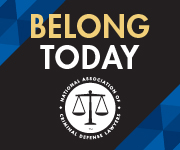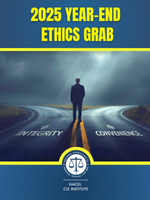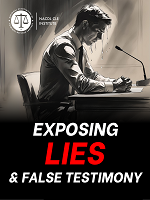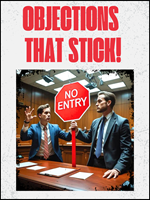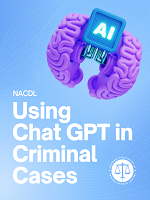Access to The Champion archive is one of many exclusive member benefits. It’s normally restricted to just NACDL members. However, this content, and others like it, is available to everyone in order to educate the public on why criminal justice reform is a necessity.
I. Introduction
Why did Judge Aaron Persky not sentence Stanford University student-athlete Brock Turner to longer than six months in jail for sexually assaulting an unconscious woman? Why was Texas teenager Ethan Couch, characterized as suffering from “affluenza,” sentenced to only probation for a drunk driving accident that killed four people? Why was Dylann Roof, who was eventually convicted of killing nine individuals at the Emanuel African Methodist Episcopal Church in South Carolina, taken into custody unscratched and served a fast-food meal?
These cases have acquired a high profile because many believe that these individuals’ whiteness, and in some cases wealth, contributed to their relatively favorable treatment. In contrast, Henry Montgomery, whose Supreme Court case gave juveniles sentenced to mandatory life-without-parole a shot at resentencing, was denied parole in Louisiana after serving 54 years for killing a sheriff’s deputy. Kalief Browder, who was held for over a thousand days at New York City’s Rikers Island because he could not afford bail on a robbery charge that was later dismissed, committed suicide after his release. And Eric Garner, who was selling untaxed loose cigarettes in Staten Island, died from being placed in a chokehold during an arrest.
The contrast between these sets of cases — with those in the latter group being African American and low-income — has led some to call for more punitive treatment of white and affluent defendants, as exemplified by Stanford Law professor Michele Dauber’s successful campaign to recall Judge Persky. But ending mass incarceration requires reducing excessive punishment for everyone, rather than ratcheting up penalties for the privileged. “The United States would still have an incarceration crisis,” University of Pennsylvania professor Marie Gottschalk has noted, “even if it were locking up African Americans at ‘only’ the rate at which whites in the United States are currently incarcerated — or if it were not locking up any African Americans at all.”1 Unfamiliarity with these facts suggests that the disproportionately harsh treatment of people of color in the criminal justice system is not just a travesty in its own right, but also skews assessments of what makes a fair criminal penalty for anyone.
This article presents a framework for understanding the sources of racial disparity in the criminal justice system and suggests actions that defense attorneys can take to address this problem. The roots of this racial disparity precede criminal justice contact: conditions of socioeconomic inequality contribute to higher rates of some violent and property crimes among people of color. But four features of the justice system exacerbate this underlying inequality: (1) laws and policies with a disparate racial impact; (2) racial bias in discretionary decisions; (3) underfunding of key criminal justice services and the imposition of financial burdens; and (4) the collateral consequences of a felony conviction.
As described below, jurisdictions around the country have worked to address each of these sources of inequality. Defense attorneys can contribute to these efforts by assessing their casework for bias; engaging in public education, litigation, and advocacy; and by reforming hiring, admissions, and discipline policies in the institutions to which they belong. Specifically, they can mitigate the impact of implicit bias in their case triage; engage in or support research, strategic litigation, and advocacy to promote and preserve reforms in policing, prosecution, sentencing laws, collateral consequences, and school discipline policies; call for investments in crime prevention and drug treatment programs; and model fair hiring practices and call for ban-the-box admissions policies at their alma maters. As described below, efforts like these have helped to challenge punitive and racially disparate policies in jurisdictions including Mississippi, Kentucky, New York City, Portland, Seattle, St. Louis, and Washington, D.C.
II. Racial Disparities in Both Crime and Justice
At 2001’s levels of imprisonment, one in three African American men will be imprisoned at some point in their lives — six times the rate for white men and twice the rate for Latino men.2 Among black men in their 20s and 30s who lack a high school degree, over two-thirds have served time in a state or federal prison.3 These statistics reveal how low-income men of color bear the brunt of punitive criminal justice policies. Such disproportionately high levels of imprisonment cannot be attributed entirely to differences in crime rates.
Legacies of overt racism and contemporary practices of willful neglect have divested many black communities of the economic and social resources that act as buffers to criminal offending. In 1968, the Kerner Commission called on the country to make “massive and sustained” investments in jobs and education to reverse the “segregation and poverty [that] have created in the racial ghetto a destructive environment totally unknown to most white Americans.”4 Fifty years later in 2018, the Commission’s lone surviving member concluded that “in many ways, things have gotten no better — or have gotten worse.”5 In large part because African Americans are more likely to experience concentrated urban poverty, they are more likely to commit certain violent and property crimes — although people of color buy and sell drugs at similar rates as whites. Criminal justice outcomes both reflect and skew these patterns:
- Higher rates of geographically concentrated socioeconomic disadvantage contribute to higher rates of certain violent and property crimes among African Americans.6 In 2016, African Americans represented 13 percent of the U.S. population. But they comprised 38 percent of arrests for violent crimes (53 percent for murder and nonnegligent manslaughter) and 28 percent of arrests for property crimes. Arrest rates do not always reflect offending patterns, but information gathered from victimization surveys and self-reports of criminal offending suggest that, especially for certain violent crimes and to a lesser extent for property crimes, the race of those arrested resembles those of the people who have committed these crimes.7
- While drug offending does not differ substantially by race, drug law enforcement certainly does. For example, the ACLU found that blacks were 3.7 times as likely to be arrested for marijuana possession as whites in 2010, even though rates of marijuana usage were comparable.8 More broadly, surveys by federal agencies show that both recently and historically, whites, blacks, and Hispanics have used illicit drugs at roughly similar rates.9 Some studies also suggest that drug users generally purchase drugs from people of the same race or ethnicity as themselves.10 Socioeconomic inequality does lead people of color to disproportionately use and sell drugs outdoors, where they are more readily apprehended by police. But disparities in drug arrests are largely driven by policy decisions and the discretionary choices of officers.
Absent meaningful efforts to address societal segregation and disproportionate levels of poverty, U.S. criminal justice policies have cast a dragnet targeting African Americans and other people of color. But as Georgetown University law professor Paul Butler has written, “black male violence should not distract from also focusing on state violence by the police.”11 Before turning to how defense attorneys can challenge police violence and racial inequality in criminal justice more broadly, it is worth considering two ways that they can also address the underlying disparities in crime rates.
First, defense attorneys can join police chiefs in decrying policies that are counterproductive as crime-reduction strategies — as with recent advocacy against loosening gun laws and tightening immigration enforcement. Many urban police chiefs, including former Milwaukee Police Chief Edward Flynn, have called for stricter gun laws.12 In 2018, the International Association of Chiefs of Police opposed Congress’s efforts to require states to honor concealed-carry permits issued in other states.13 In addition, police leaders including William Evans, Commissioner of the Boston Police Department, have vocally rejected attempts by Donald Trump and Jeff Sessions to tie stricter immigration enforcement with crime policy. As Evans explained: “We need to build trust with the immigrant community. The last thing we want is for people to be afraid of us. … They won’t report crimes or help us in their communities if they [are] afraid of us.”14
Second, defense attorneys can advocate for greater investments in effective crime-reduction policies such as expanding health insurance coverage to prevent and treat substance use disorder, providing high-quality early education to expand young people’s educational prospects, and creating residential mobility programs to reduce neighborhood segregation.15 In this effort, they can partner with faith-based organizations and other social service organizations. For example, following a 2004 study by University of Washington professor Katherine Beckett revealing that racial disparities in drug arrests were driven by law enforcement focus on crack and outdoor drug venues, the Defender Association in Seattle organized a coalition of community advocates to develop the Clean Dreams Project, a street-level outreach program offering drug sellers immediate access to resources they can use to leave the streets and change their lives.16 Relatedly, expanding access to mental health services is believed to be vital in tackling the high rates at which American Indians are killed in police encounters.17
In addition to calling for policies that get to the root of disparate crime rates, defense attorneys can support programs that mitigate the impact of disparate policing. In some jurisdictions, advocating for the least restrictive sentencing alternative may involve diverting clients to drug courts. In these contexts, defense attorneys can work to make these courts more effective tools in tackling mass incarceration and racial disparities by ensuring that they protect clients’ due process rights, have inclusive admissions criteria, and provide effective forms of treatment.18
Fighting mass incarceration will require doing more than fighting crime. As Gottschalk has argued, “In plotting an escape from the carceral state, we need to resist the belief that the only real option is to tackle the ‘root causes’ of these high levels of crime — massive unemployment and underemployment, massive poverty, and unconscionable levels of social, political and economic inequality.”19 This is because incarceration levels and crime are not as closely connected as some might think. For example, while crime rates have fallen to half their peak levels in the 1990s, by the end of 2016, the number of people held in U.S. prisons had declined by just six percent since its 2009 peak.20
Ending the disproportionately high levels of incarceration among people of color will require a focused effort, as illustrated by recent trends in the juvenile justice system. Between 2001 and 2015, overall juvenile placements fell by 54 percent, including declines for whites, blacks, Latinos, and American Indians. But since white placements fell to a greater degree than for other groups, racial and ethnic disparities increased from the start of the century. The racial gap between black and white youth in secure commitment increased by 22 percent during this period, and the gap between American Indian and white youth increased by 14 percent.21 To help reduce both levels of incarceration and racial disproportionality, the following section outlines the four mechanisms through which criminal justice policies and practices have disadvantaged people of color, and highlights efforts to reverse these trends.
III. Sources of Racial Disparities Within the Justice System and Models for Reform
Whether intentional or not, through discretionary decisions or agency-wide policy, and with direct impact on people of color or on those who are low-income, four features of the justice system fuel racial disparities. This section examines these sources of disparity and illustrates reforms seeking to undo their impact. As described below, defense attorneys can work to replicate and strengthen these efforts in their jurisdictions — by pushing for needed reforms and ensuring that promised ones are carried out — while also working to eliminate bias in their individual casework and discrimination in their office hiring practices.
1. Many ostensibly race-neutral policies and laws have a disparate racial impact.
Myriad criminal justice policies that appear to be race-neutral collide with broader socioeconomic patterns to create a disparate racial impact. In particular, police policies that cast a wide net in neighborhoods and on populations associated with high crime rates disproportionately affect people of color — whether or not they live in these neighborhoods or are engaged in any crime. Also, sentencing laws that are designed to more harshly punish certain offenses or offending patterns can also often have a disparate impact on people of color. For example:
- Policing policies such as “broken windows” and stop, question, and frisk disproportionately affect people of color. In New York City, researchers have shown that police stopped African Americans and Latinos at rates that could not be explained by the overall crime rate of these populations or of the communities in which individuals were stopped.22 Moreover, research shows that order-maintenance strategies have had only a modest impact on serious crime rates while causing great damage to communities of color.23
- Sentencing laws such as drug-free school zone laws mandate sentencing enhancements for people caught selling drugs near school zones. The expansive geographic range of these zones coupled with high urban density has disproportionately affected residents of urban areas, and particularly those in high-poverty areas, who are largely people of color.24 In addition, “three strikes and you’re out” and other habitual offender laws disproportionately affect people of color who are more likely to have criminal records.
One way that defense attorneys can support reforms to these policies is through research and public education. This research can be conducted independently or in partnership with a university, news outlet, or other research organization. For example, a white paper published in 2014 by ArchCity Defenders in St. Louis revealed how municipalities such as Ferguson had a fiscal incentive to focus law enforcement efforts on traffic violations and petty offenses, disproportionately targeting low-income African Americans.25 The report — based on court watching, sworn statements from clients, and public records from the state and municipal courts — was critical in contextualizing both Michael Brown’s death at the hands of police and the ensuing outrage.
In addition to engaging in research, defense attorneys can litigate and advocate for reforms and their implementation. For example, in response to reports that everyone arrested under Mississippi’s gang law in recent years was black, State Public Defender Andre de Gruy proposed that the state would benefit from a racial impact analysis of the law, saying: “[A] provision could be crafted to review the racial impact annually.”26 In Washington, D.C., after The Washington Post criticized the city’s Youth Rehabilitation Act — which allows for sentencing alternatives and record sealing for youth under age 22 — the Public Defender Service defended the existing law and called for extending the age limit to 25, given the age cutoff of many youth services “make age 22 to 25 a particularly vulnerable time period when the District’s poor and marginalized young adults are susceptible to involvement in criminal activity.”27 In New York City, public defenders have helped to create Court Watch NYC, a group that sends observers to courts across the city to ensure that district attorneys are living up to their reformist promises.28 In this way, as Fordham University law professor John Pfaff has argued, public defenders are ensuring that “substantive, systemic change happens.”29 To bring about meaningful change, some defense attorneys have themselves entered district attorney races, as with Larry Krasner’s successful bid in Philadelphia and Shannon McAuliffe’s campaign in Massachusetts’s Suffolk County.30 Taylor Pendergrass, who leads the ACLU’s Prosecutorial Reform Initiative, explains that law school graduates and early-career attorneys should consider working for reformist prosecutors because “if they can’t find staff committed to the mission, they won’t be able to reduce incarceration no matter how great the vision/leadership is at the top.”31
Examples of reforms to laws and policies with a disparate racial impact include the following:
- Policing: The highest officials in New York City had “turned a blind eye to the evidence that officers are conducting stops in a racially discriminatory manner,” Judge Shira A. Scheindlin concluded regarding the city’s stop-and-frisk tactic, declaring it unconstitutional in 2013 in response to a federal class action lawsuit filed by the Center for Constitutional Rights.32 The police policy, which broadly targeted male residents of neighborhoods populated by low-income people of color to uncover drugs and weapons, was shown to be ineffective, and this assessment was further validated when New York City continued its crime decline after scaling back stop and frisk. New York City has also limited, but not yet disavowed, Broken Windows Policing.33
- Sentencing: Indiana is among several states that have amended their drug-free school zone laws, in this case after the state’s Supreme Court began reducing harsh sentences imposed under the law and a university study revealed its negative impact and limited effectiveness.34 The reform’s components included reducing drug-free zones from 1,000 feet to 500 feet, eliminating them around public housing complexes and youth program centers, and adding a requirement that minors must be reasonably expected to be present when the underlying drug offense occurs. In Portland, the Metropolitan Public Defender Services was successful in defeating the city’s Drug Free Zone Ordinance through litigation and by increasing public awareness of the law’s disparate impact and enforcement.35
- Prosecution: Following a two-year study conducted in partnership with the Vera Institute of Justice, the Manhattan District Attorney’s Office learned that its plea guidelines emphasizing prior arrests created racial disparities in plea offers. The office committed to conducting implicit bias training for its assistant prosecutors and was urged to revise its policy of tying plea offers to arrest histories.36
- School discipline: Several school districts have enacted new school disciplinary policies to reduce racial disparities in out-of-school-suspensions and police referrals. Researchers have shown that schools are more likely to respond to African American student misbehavior with punishment rather than with supportive services.37 Reforms at Florida’s Miami-Dade and Broward County Public Schools have cut school-based arrests by more than half in five years and significantly reduced suspensions.38
2. Criminal justice practitioners’ use of discretion is — often unintentionally — influenced by racial bias.
While most white Americans no longer endorse overt and traditional forms of prejudice associated with the era of Jim Crow racism — such as beliefs about the biological inferiority of blacks and support for segregation and discrimination — a nontrivial proportion continue to express negative cultural stereotypes of African Americans.39 Even more common among most white Americans, and many people of color, is implicit racial bias: unintentional and unconscious racial biases that affect decisions and behaviors. Psychological experiments have shown that these biases are pervasive in society and are held even by people who disavow overt prejudice.40 Implicit racial biases also permeate the work of criminal justice professionals and the deliberation of jurors.41 Specifically:
- Policing: In recent years, black drivers have been somewhat more likely to be stopped than whites but have been far more likely to be searched and arrested.42 The causes and outcomes of these stops differ by race, as described next, and staggering racial disparities in rates of police stops persist in certain jurisdictions — pointing to unchecked racial bias, whether intentional or not, in officer discretion. A closer look at the causes of traffic stops reveals that police are more likely to stop black and Hispanic drivers for discretionary reasons — for “investigatory stops” (proactive stops used to investigate drivers deemed suspicious) rather than “traffic-safety stops” (reactive stops used to enforce traffic laws or vehicle codes).43 Nationwide surveys also reveal disparities in the outcomes of police stops. Once pulled over, black and Hispanic drivers were three times as likely as whites to be searched (6 percent and 7 percent versus 2 percent) and blacks were twice as likely as whites to be arrested.44 Because of their high search rate for black drivers, police officers generally achieve a lower “contraband hit rate” among searched black versus white drivers.45
- Prosecutors: Prosecutors are more likely to charge people of color with crimes that carry heavier sentences than whites. Federal prosecutors, for example, are twice as likely to charge African Americans with offenses that carry mandatory minimum sentences than otherwise similar whites.46 State prosecutors are also more likely to charge black rather than similar white defendants under habitual offender laws.47
- Judges: Federal judges have been four times more likely to impose imprisonment for convicted noncitizens than for citizens, even after accounting for sentencing guidelines and criminal histories.48 Federal judges have also been more likely to sentence noncitizens to longer prison terms than citizens, imposing the harshest penalties on undocumented immigrants.
- Correctional officers and parole agents: Racial bias among correctional officers and parole agents shapes the prospects for release from and readmission into prison.49 As revealed by a New York Times investigation on New York prisons, comparable in-prison misconduct — a major determinant of parole decisions — may result in divergent prison disciplinary records for blacks and Latinos versus whites. Based on an analysis of almost 60,000 disciplinary cases from the state’s prisons, reporters found that disparities in discipline were greatest for infractions that gave discretion to guards, such as disobeying a direct order. Once in the community on parole or probation supervision, racial disparities contribute to people of color being more likely to be returned to prison. For example, the Urban Institute’s examination of probation revocation rates in a variety of jurisdictions around the country revealed that black probationers were revoked at levels that “raise concerns about the presence of bias to the disadvantage of black probationers.”
Defense attorneys can mitigate how implicit bias impacts their triage of heavy caseloads through data collection and oversight, and they can educate their peers to do the same by working with bar associations and local criminal defense attorney associations.50 In addition, they can work with researchers and the media to raise awareness about implicit bias among other courtroom professionals and advocate for policies to monitor outcomes, establish objective criteria and guidelines for decision-making, and hold practitioners accountable for biased outcomes. A 2008 manual published by the Department of Public Advocacy in Kentucky, “the state that brought us Batson,” can guide attorneys litigating racial bias issues ranging from selective prosecution to pretrial release, voir dire, and sentencing.51 Finally, defense attorneys can call on prosecutors and judges to devise policies that address upstream disparities.
Two discovery efforts in the 1990s illustrate how defense attorneys can attempt to demonstrate and challenge the existence of bias in the work of criminal justice practitioners. To determine if federal prosecutors disproportionately sought to prosecute African Americans, federal public defenders in Los Angeles sought to discover data on federal crack prosecutions as part of a selective prosecution claim. They were ultimately unsuccessful, when the Supreme Court ruled in United States v. Armstrong that they had “failed to satisfy the threshold showing … that the government declined to prosecute similarly situated suspects of other races.”52 But in state court, the Public Defender Office of Gloucester County, N.J., was successful in its discovery motions by using an earlier court decision to establish a prima facie case of discriminatory traffic stops by state troopers in a stretch of Interstate 95.53 The attention drawn to this case contributed to President Clinton directing all federal law enforcement agencies to collect demographic information on the people they question, search, or arrest to assess whether they are engaging in racial profiling.
Recent successful efforts to challenge harmful or biased justice practices include:
- Policing: After criticism and lawsuits about racial disparities in its drug law enforcement, some precincts in and around Seattle have implemented a pre-booking diversion strategy: the Law Enforcement Assisted Diversion program, or LEAD. The program gives police officers the option of transferring individuals arrested on drug and prostitution charges to social services rather than sending them deeper into the criminal justice system. Relatedly, to address disparities in enforcement, the New York City Police Department stated it would no longer make arrests for possession of small amounts of marijuana but would instead treat these cases as noncriminal offenses subject to a fine rather than jail time.54 The district attorneys of Manhattan and Brooklyn are also considering plans to stop prosecuting the vast majority of people arrested on low-level marijuana charges.55
- Prosecution: The Vera Institute of Justice’s Prosecution and Racial Justice program worked with various jurisdictions to reduce racial and ethnic disparities caused by prosecutorial decision-making. In Milwaukee, prosecutors previously filed drug paraphernalia charges against 73 percent of black suspects but only 59 percent of white suspects.56 The prosecutor’s office was able to eliminate this disparity by reviewing data on outcomes, stressing diversion to treatment or dismissal, and requiring attorneys to consult with supervisors prior to filing such charges.
- Jurors: U.S. District Judge Mark W. Bennett spends 25 minutes discussing implicit bias with the potential jurors in his court. His jurors watch video clips demonstrating bias in hidden camera situations, receive instructions on avoiding bias, and sign a pledge to “not decide the case based on biases.”57 Although the impact of this approach has not been measured, mock jury studies have shown that increasing the salience of race reduces biased decision-making.
3. Key segments of the criminal justice system are underfunded or impose financial burdens that place blacks and Latinos — who are disproportionately low-income — at a disadvantage.
Underfunding key segments of the criminal justice system — such as indigent defense and alternatives to incarceration — leads to worse outcomes for low-income defendants who are disproportionately people of color. Moreover, many criminal justice policies and practices — such as cash bail — disadvantage people with limited resources. By advocating for policies that create an even playing field for the poor, defense attorneys can uproot these sources of racial disparity in the justice system. For example:
- Indigent defense: Most jurisdictions inadequately fund their indigent defense programs. While there are many high-quality public defender offices, in far too many cases indigent individuals are represented by public defenders with excessively high caseloads, or by assigned counsel with limited experience in criminal defense. Public defenders in Louisiana have sued the state to address these problems and those in Kansas City, Missouri, have protested their crushing caseloads.58
- Pretrial Detention: African Americans were incarcerated in local jails at 3.5 times the rate of non-Hispanic whites in 2016.59 Given that nearly two-thirds (65 percent) of people in jail in 2016 were being detained prior to trial, policies and decisions influencing pretrial detention play a key role in driving the disparity in the jail population and beyond.60 Pretrial detention has been shown to increase the odds of conviction, and people who are detained awaiting trial are also more likely to accept less favorable plea deals, to be sentenced to prison, and to receive longer sentences. Seventy percent of pretrial releases require money bond, an especially high hurdle for low-income defendants, who are disproportionately people of color.61 Blacks and Latinos are more likely than whites to be denied bail, to have a higher money bond set, and to be detained because they cannot pay their bond.62 They are often assessed to be higher safety and flight risks because they are more likely to experience socioeconomic disadvantage and to have criminal records.
The defense bar should advocate for sufficient resources to prepare an effective defense. In addition, calling for investments in alternatives to incarceration and for limitations on the financial outlays required from defendants would help to even the playing field for low-income people of color in the criminal justice system. Past efforts along these lines include the following:
- Alternatives to incarceration: In Berks County, Pennsylvania, officials were able to reduce the number of youth in secure detention — most of whom were youth of color — by 67 percent between 2007 and 2012 in part by increasing reliance on alternatives. These included nonsecure shelters for youth who cannot safely return home but did not require locked detention, evening reporting centers, electronic monitoring, and expanded use of evidence-based treatment programs.
- Cash bail: In 2014, New Jersey reformed its bail system to emphasize risk assessment over monetary bail, a reform that has reduced rates of pretrial detention.63 Previously, many defendants were detained because they could not post bail, even if they did not pose a public safety or flight risk. Judges now rely on risk assessment tools to guide bail determinations. In 2016, New Mexico voters approved a constitutional amendment to reduce reliance on cash bail.64
4. Criminal justice policies exacerbate socioeconomic inequalities by imposing collateral consequences on those with criminal records.
African Americans — particularly black men — are most exposed to the collateral consequences associated with a criminal record. In 2010, eight percent of all adults in the United States had a felony conviction on their record.65 Among African American men, the rate was one in three (33 percent).66 People with criminal records face a host of obstacles to re-entering society even after they have fully completed their term of incarceration or community supervision. These obstacles include barriers to securing steady employment and housing, to accessing the social safety net and federal student aid, and to exercising the right to vote. For example:
- Employment and Housing: Nearly one-third of U.S. workers hold jobs that require an occupational license, a requirement that sometimes bars and often poses cumbersome obstacles for people with criminal records.67 In sectors that do not require licensing, employers are 50 percent less likely to call back white job applicants with incarceration histories than comparable applicants without prison records.68 African American job applicants, who are less likely to receive callbacks than whites to begin with, experience even more pronounced discrimination related to a criminal record. As scholar Devah Pager’s research has revealed, whites with criminal records receive more favorable treatment than blacks without criminal records.69 People with criminal convictions also face discrimination in the private rental housing market, and those with felony drug convictions face restrictions in accessing government-assisted housing.70
- Public Benefits: The Welfare Reform Act of 1996 imposed a lifetime denial of cash assistance and food stamps to people convicted in state or federal courts of felony drug offenses, unless states opt out of the ban.71 Given the dynamics of social class and the accompanying disparate racial effects of the criminal justice system, women and children of color are disproportionately impacted by this exclusionary law.72
Advocates have had successes in limiting the collateral consequences of criminal convictions, as outlined below. Defense attorneys can advocate for reforms in their communities — including by reviewing the admissions and hiring policies of their alma maters — while also modelling reforms in their workplaces by ensuring that their firm or agency’s hiring practices do not discriminate against people with criminal records.
- Employment: To reduce barriers to employment for those with criminal records, many jurisdictions have passed laws or issued administrative orders to “Ban the Box” — to remove the question about conviction history from initial job applications and to delay a background check until later in the hiring process.73 These reforms usually apply only to public sector employers, but they are sometimes extended to the private sector as well.
- Public Benefits: By 2018, 24 states had fully opted out of the federal food stamp ban for people with felony drug convictions and 21 others had only done so in part, with five states continuing to fully enforce the ban.74 A smaller number of states have fully or partially lifted their ban on cash assistance.
Conclusion
Growing public awareness about mass incarceration has begun to reduce high levels of imprisonment, especially among African Americans. While the total U.S. prison population has declined by just six percent since its peak level in 2009, states including New Jersey, New York, and Connecticut have reduced their prison populations by over 25 percent while often outpacing the nationwide crime drop.75 Declines in levels of African American imprisonment have been the most substantial.76 Between 2000 and 2016, the black prison population declined by 20 percent nationwide while the white prison population declined by seven percent.77 Reforms to harsh sentencing laws that have disproportionately impacted African Americans and the greater willingness of urban rather than rural jurisdictions to implement criminal justice reforms have helped to reduce African American incarceration.78 But even after this progress, African Americans are incarcerated in state prisons at a rate that is 5.1 times that of whites.79
The persistence of racial disparities in incarceration underscores the need for continued reforms. Crime upticks in some communities and escalating opioid overdose deaths nationwide have also led to calls to undo reforms and implement regressive policies. As described in this article, jurisdictions around the country have been tackling racial disparities in criminal justice, in addition to reducing overall levels of incarceration. Defense attorneys are well poised to help expand the scale and increase the speed of these efforts.
Notes
- Marie Gottschalk, Are We There Yet? The Promise, Perils and Politics of Penal Reform, Prison Legal News, Jan. 1, 2016, available at https://www.prisonlegalnews.org/news/2016/jan/1/are-we-there-yet-promise-perils-and-politics-penal-reform.
- Thomas Bonczar, Prevalence of Imprisonment in the U.S. Population, 1974-2001, U.S. Bureau of Justice Statistics (Aug. 2003).
- Jeremy Travis, Bruce Western & Steve Redburn (eds.), The Growth of Incarceration in the United States: Exploring Causes and Consequences, National Research Council, at 154 (2014), https://www.nap.edu/catalog/18613/the-growth-of-incarceration-in-the-united-states-exploring-causes.
- Report of the National Advisory Commission on Civil Disorders: Summary of Report (1967), http://www.eisenhowerfoundation.org/docs/kerner.pdf.
- Fred Harris & Alan Curtis, The Unmet Promise of Equality, N.Y. Times, Feb. 28, 2018, available at https://www.nytimes.com/interactive/2018/02/28/opinion/the-unmet-promise-of-equality.html.
- Ruth Peterson & Lauren Krivo, Divergent Social World: Neighborhood Crime and the Racial-Spatial Divide (2012); Robert Sampson, Jeffrey Morenoff & Stephen Raudenbush, Social Anatomy of Racial and Ethnic Disparities in Violence, 95 Am. J. Pub. Health 224–232 (2005).
- See Robert Sampson & Janet Lauritsen, Racial and Ethnic Disparities in Crime and Criminal Justice in the United States, 21 Crime and Justice 318–330, 311–374 (1997); Stewart D’Alessio & Lisa Stolzenberg, Race and the Probability of Arrest, 81 Soc. Forces 1381–1397 (2003); Richard Felson, Glenn Deane & David Armstrong, Do Theories of Crime or Violence Explain Race Differences in Delinquency?, 37 Soc. Sci. Research 624–641 (2008).
- Ezekiel Edwards, Will Bunting & Lynda Garcia, The War on Marijuana in Black and White, American Civil Liberties Union (June 2013), https://www.aclu.org/files/assets/1114413-mj-report-rfs-rel1.pdf.
- Lloyd Johnston et al., Monitoring the Future: National Survey Results on Drug Use, 1975-2012, The National Institute on Drug Abuse & National Institutes of Health (2012), http://www.monitoringthefuture.org/pubs/monographs/mtf-vol1_2012.pdf (Tbls. 4-5, 4-6, and 4-7); U.S. Department of Health and Human Services, Results from the 2013 Survey on Drug Use and Health: Summary of National Findings, U.S. Department of Health and Human Services, (Figure 2.12) (2013), http://www.samhsa.gov/data/sites/default/files/NSDUHresultsPDFWHTML2013/Web/NSDUHresults2013.pdf; Lloyd Johnston et al., Demographic Subgroup Trends Among Adolescents for Fifty-One Classes of Licit and Illicit Drugs 1975-2012, The University of Michigan Institute for Social Research, Figure 6 (2013), http://www.monitoringthefuture.org/pubs/occpapers/mtf-occ79.pdf.
- Katherine Beckett, Kris Nyrop & Lori Pfingst, Race, Drugs, and Policing: Understanding Disparities in Drug Delivery Arrests, 44 Criminology 105–37 (2006); K. Jack Riley, Crack, Powder Cocaine, and Heroin: Drug Purchase and Use Patterns in Six Major U.S. Cities, National Institute of Justice 15-16 (December 1997), available at https://www.ncjrs.gov/pdffiles/167265.pdf.
- Paul Butler, Chokehold: Policing Black Men 121 (2017).
- Martin Kaste, Gun Debate Divides Nation’s Police Officers, Too, NPR, Oct. 9, 2015, available at https://www.npr.org/2015/10/09/446866939/gun-debate-divides-nations-police-officers-too.
- Tom Jackman, Police Chiefs Implore Congress Not to Pass Concealed-Carry Reciprocity Gun Law, Wash. Post, Apr. 19, 2018, available at https://www.washingtonpost.com/news/true-crime/wp/2018/04/19/nations-police-chiefs-implore-congress-not-to-pass-concealed-carry-reciprocity-gun-law/?utm_term=.e831167a7010.
- Nazgol Ghandnoosh, Immigration and Public Safety, The Sentencing Project, at 10 (Mar. 16, 2017), https://www.sentencingproject.org/publications/immigration-public-safety.
- Nazgol Ghandnoosh, Opioids: Treating an Illness, Ending a War, The Sentencing Project (Dec. 13, 2017), https://www.sentencingproject.org/publications/opioids-treating-illness-ending-war/; The Sentencing Project, Ending Mass Incarceration: Social Interventions That Work (Oct. 2013), https://www.sentencingproject.org/wp-content/uploads/2015/12/Ending-Mass-Incarceration-Social-Interventions-That-Work.pdf; Raj Chetty, Nathaniel Hendren & Lawrence Katz, The Effects of Exposure to Better Neighborhoods on Children: New Evidence from the Moving to Opportunity Experiment, 106 Am. Econ. Rev. 855-902 (2016).
- The Sentencing Project, Reducing Racial Disparity in the Criminal Justice System: A Manual for Practitioners and Policymakers (2008), http://www.sentencingproject.org/doc/publications/rd_reducingracialdisparity.pdf.
- Sarah Tory, Police Shootings of Native Americans Spark a Movement, High Country News, May 22, 2017, available at https://www.hcn.org/articles/native-lives-matter-a-movement-emerges.
- Ghandnoosh, supra note 15.
- Gottschalk, supra note 1.
- Nazgol Ghandnoosh, Can We Wait 75 Years to Cut the Prison Population in Half?, The Sentencing Project, (March 8, 2018), https://www.sentencingproject.org/publications/can-wait-75-years-cut-prison-population-half.
- The Sentencing Project, Black Disparities in Youth Incarceration (2017), https://www.sentencingproject.org/publications/black-disparities-youth-incarceration/; The Sentencing Project, Native Disparities in Youth Incarceration (2017), https://www.sentencingproject.org/publications/native-disparities-youth-incarceration.
- Andrew Gelman, Jeffrey Fagan & Alex Kiss, An Analysis of the New York City Police Department’s ‘Stop-and-Frisk’ Policy in the Context of Claims of Racial Bias, 102 Am. Statistical Ass’n 813-823 (2007).
- Nazgol Ghandnoosh, Black Lives Matter: Eliminating Racial Inequity in the Criminal Justice System, The Sentencing Project (Feb. 3, 2015), https://www.sentencingproject.org/publications/black-lives-matter-eliminating-racial-inequity-in-the-criminal-justice-system.
- Nicole Porter & Tyler Clemons, Drug-Free Zone Laws: An Overview of State Policies, The Sentencing Project (Dec. 2013), http://sentencingproject.org/doc/publications/sen_Drug-Free%20Zone%20Laws.pdf.
- ArchCity Defenders, Municipal Courts White Paper (2014), http://s3.documentcloud.org/documents/1279541/archcity-defenders-report-on-st-louis-county.pdf.
- Donna Ladd, Only Black People Prosecuted Under Mississippi Gang Law Since 2010, Jackson Free Press, Mar. 29, 2018, available at http://www.jacksonfreepress.com/news/2018/mar/29/only-black-people-prosecuted-under-mississippi-gan/?eType=EmailBlastContent&eId=5044b3c6-82ec-4787-8165-ec65f83234f4.
- Comments of the Public Defender Service for the District of Columbia Regarding Bill 22-0451 Presented by Katerina Semyonova Before the Committee on the Judiciary and Public Safety Council of the District of Columbia (Oct. 26, 2017).
- John Pfaff, Why Public Defenders Matter More Than Ever in a Time of Reform, In Justice Today, Apr. 18, 2018, https://injusticetoday.com/why-public-defenders-matter-more-than-ever-in-a-time-of-reform-9b018e2184fe.
- Emphasis in original. at 28.
- Michael Jonas, McAuliffe Says She’ll Be the ‘Progressive Change Candidate’ for DA, CommonWealth, Feb. 21, 2018, available at https://commonwealthmagazine.org/criminal-justice/mcauliffe-says-shell-progressive-change-candidate-da.
- Email correspondence with Taylor Pendergrass (May 8, 2018).
- Joseph Goldstein, Judge Rejects New York’s Stop-and-Frisk Policy, N.Y. Times, Aug. 12, 2013, available at http://www.nytimes.com/2013/08/13/nyregion/stop-and-frisk-practice-violated-rights-judge-rules.html.
- J. David Goodman, Fewer Criminal Tickets for Petty Crimes, Like Public Urination, N.Y. Times, Oct. 20, 2017, available at https://www.nytimes.com/2017/10/20/nyregion/criminal-summons-civil-public-urination.html?_r=0.
- Porter & Clemons, supra note 24.
- The Sentencing Project, supra note 16.
- Besiki Kutateladze, Whitney Tymas & Mary Crowley, Race and Prosecution in Manhattan, Vera Institute of Justice (July 2014), http://www.vera.org/pubs/special/race-and-prosecution-manhattan; Editorial Board, How Race Skews Prosecutions, N.Y. Times, July 13, 2014, available at http://www.nytimes.com/2014/07/14/opinion/how-race-skews-prosecutions.html?_r=0.
- David Ramey, The Social Structure of Criminalized and Medicalized School Discipline, 88 Sociology of Education 181-201 (2015); Civil Rights Division, U.S. Department of Justice & Office for Civil Rights, U.S. Department of Education, Dear Colleague Letter: Nondiscriminatory Administration of School Discipline (2014), http://www2.ed.gov/about/offices/list/ocr/letters/colleague-201401-title-vi.pdf.
- David Smiley & Michael Vasquez, Broward, Miami-Dade Work to Close the ‘School-to-Prison Pipeline,’ Miami Herald, Nov. 10, 2013, available at http://www.miamiherald.com/news/local/community/miami-dade/article1957319.html.
- Lawrence Bobo, Racial Attitudes and Relations at the Close of the Twentieth Century, in America Becoming: Racial Trends and Their Consequences 269, 264-301 (Neil Smelser, William Wilson & Faith Mitchell eds., 2001); Lawrence Bobo, Camille Charles, Maria Krysan & Alicia Simmons, The Real Record on Racial Attitudes, in Social Trends in American Life: Findings from the General Social Survey Since 1972, Figure 11, 38–83 (Peter Marsde ed., 2012).
- Anthony Greenwald, Debbie McGhee & Jordan Schwartz, Measuring Individual Differences in Implicit Cognition: The Implicit Association Test, 74 Personality & Soc. Psychol. 1464, 1474 (1998); Irene Blair et al., An Assessment of Biases Against Latinos and African Americans Among Primary Care Providers and Community Members, 103 Am. J. Pub. Health 92–98 (2013).
- Jeffrey Rachlinski et al., Does Unconscious Racial Bias Affect Trial Judges?, 84 Notre Dame L. Rev. 1210, 1195–1246 (2009); Theodore Eisenberg & Sheri Lynn Johnson, Implicit Racial Attitudes of Death Penalty Lawyers, 53 DePaul L. Rev. 1545, 1546-1551 (2004); Tara Mitchell et al., Racial Bias in Mock Juror Decision-Making: A Meta-Analytic Review of Defendant Treatment, 41 Law & Hum. Behav. 627–28 (2005); Phoebe Ellsworth & Samuel Summers, How Much Do We Really Know About Race and Juries? 78 Review Soc. Sci. Theory & Research 997–1031 (2003).
- The Stanford Open Policing Project, Police Behavior During Traffic and Street Stops, 2011 (Sept. 2013), https://openpolicing.stanford.edu/findings.
- Charles Epp, Steven Maynard-Moody & Donald Haider-Markel, Pulled Over: How Police Stops Define Race and Citizenship (2014).
- Lynn Langton & Matthew Durose, Police Behavior During Traffic and Street Stops, 2011, S. Bureau of Justice Statistics (Sept. 2013); Christine Eith & Matthew Durose, Contacts Between Police and the Public, 2008, U.S. Bureau of Justice Statistics (Oct. 2011).
- David Harris, Hearing on ‘Ending Racial Profiling in America,’ Testimony of David A. Harris, U.S. Senate Judiciary Committee, Subcommittee on the Constitution, Civil Rights, and Human Rights, at 8 (2012), available at http://www.aila.org/content/fileviewer.aspx?docid=39289&linkid=245580.
- Sonja Starr & Marit Rehavi, Mandatory Sentencing and Racial Disparity: Assessing the Role of Prosecutors and the Effects of Booker, 123 Yale L.J. 2-80 (2013).
- Charles Crawford, Ted Chiricos & Gary Kleck, Race, Racial Threat, and Sentencing of Habitual Offenders, 36 Criminology 481–512 (2006).
- Michael T. Light, Michael Massoglia & Ryan D. King, Citizenship and Punishment: The Salience of National Membership in U.S. Criminal Courts, 79 (5) Am. Sociological Rev. 825–847 (2014).
- Michael Schwirtz, Michael Winerip & Robert Gebeloff, The Scourge of Racial Bias in New York State’s Prisons, N.Y. Times, Dec. 3, 2016, available at https://www.nytimes.com/2016/12/03/nyregion/new-york-state-prisons-inmates-racial-bias.html; Jesse Jannetta et al., Examining Racial and Ethnic Disparities in Probation Revocation, Urban Institute (April 2014), https://www.urban.org/sites/default/files/publication/22746/413174-Examining-Racial-and-Ethnic-Disparities-in-Probation-Revocation.PDF.
- Song Richardson & Phillip Atiba Goff, Implicit Racial Bias in Public Defender Triage, 122 Yale L.J. 2626-2649 (2013).
- Litigating Race Issues to Protect Equal Justice in Kentucky, 30 The Advocate (May 2008).
- United States v. Armstrong et al., 517 U.S. 456 (1996).
- The Sentencing Project, supra note 16.
- Joseph Goldstein, Marijuana May Mean Ticket, Not Arrest, in New York City, N.Y. Times, Nov. 9, 2014, available at http://www.nytimes.com/2014/11/10/nyregion/in-shift-police-dept-to-stop-low-level-marijuana-arrests-officials-say.html?_r=0.
- Benjamin Mueller, Two District Attorneys May Stop Prosecuting Most Marijuana Offenses, N.Y. Times, May 14, 2018, available at https://www.nytimes.com/2018/05/14/nyregion/two-district-attorneys-may-stop-prosecuting-most-marijuana-offenses.html?eType=EmailBlastContent&eId=4512a623-53b9-45fa-bebf-b6f2d3ed0273; see also Pfaff, supra note 28.
- Angela J. Davis, In Search of Racial Justice: The Role of the Prosecutor, 16 N.Y.U. J. Legis. & Pub. Pol’y 821–852 (2013).
- Jerry Kang et al., Implicit Bias in the Courtroom, 59 UCLA L. Rev. 1124, 1181–84 (2012).
- Teresa Wiltz, Public Defenders Fight Back Against Budget Cuts, Growing Caseloads, HuffPost, Nov. 21, 2017, available at https://www.huffingtonpost.com/entry/public-defenders-fight-back-against-budget-cuts-growing_us_5a1440d3e4b08b00ba67341f.
- E. Ann Carson, Prisoners in 2016, U.S. Bureau of Justice Statistics (Feb. 2018).
- Id. at 59.
- Cynthia Jones, ‘Give Us Free’: Addressing Racial Disparities in Bail Determinations, 16 N.Y.U. J. Legis. & Pub. Pol’y 919–962 (2013).
- Id. at 61.
- S.P. Sullivan, The Good News: N.J. Bail Overhaul Is Working. The Bad News: It’s Already Going Broke, NJ.com, Feb. 13, 2018, https://www.nj.com/politics/index.ssf/2018/02/report_finds_nj_bail_reform_is_working_--_but_its.html.
- Brett Tolman, Bail Reform Is Critical to Fighting Crime Epidemic, Santa Fe New Mexican, Oct. 2, 2017, available at http://www.santafenewmexican.com/opinion/my_view/bail-reform-is-critical-to-fighting-crime-epidemic/article_e1235f36-ebfc-54df-a055-79ece6536d03.html.
- Sarah Shannon et al., The Growth, Scope, and Spatial Distribution of People with Felony Records in the United States, 1948–2010, 54 Demography 1795–1818 (2017).
- Id. at 65.
- Sophie Quinton, To Help Ex-Offenders Get Jobs, Some States Reconsider Licenses, Stateline, Mar. 8, 2017, available at http://www.pewtrusts.org/en/research-and-analysis/blogs/stateline/2017/03/08/to-help-ex-offenders-get-jobs-some-states-reconsider-licenses.
- Devah Pager, Marked: Race, Crime, and Finding Work in an Era of Mass Incarceration (2007).
- Id. at 68.
- Michael Pinard, Criminal Records, Race and Redemption, 16 N.Y.U.J. Legis. & Pub. Pol’y 963-997 (2013); Mireya Navarro, Lawsuit Says Rental Complex in Queens Excludes Ex-Offenders, N.Y. Times, Oct. 30, 2014, available at https://www.nytimes.com/2014/10/31/nyregion/lawsuit-says-rental-complex-in-queens-excludes-ex-offenders.html.
- Marc Mauer & Virginia McCalmont, A Lifetime of Punishment: The Impact of the Felony Drug Ban on Welfare Benefits, The Sentencing Project (Sept. 2015), http://sentencingproject.org/doc/publications/cc_A%20Lifetime%20of%20Punishment.pdf.
- Id. at 71.
- Beth Avery & Phil Hernandez, Ban the Box: U.S. Cities, Counties, and States Adopt Fair Hiring Policies, National Employment Law Project (Apr. 20, 2018), http://www.nelp.org/publication/ban-the-box-fair-chance-hiring-state-and-local-guide.
- Eli Hager, Six States Where Felons Can’t Get Food Stamps, The Marshall Project, Feb 4, 2016, https://www.themarshallproject.org/2016/02/04/six-states-where-felons-can-t-get-food-stamps.
- Marc Mauer & Nazgol Ghandnoosh, Fewer Prisoners, Less Crime: A Tale of Three States, The Sentencing Project (Jul. 23, 2014), https://www.sentencingproject.org/publications/fewer-prisoners-less-crime-a-tale-of-three-states/; Ghandnoosh, supra note 20.
- On jail incarceration trends, see Jacob Kang-Brown & Ram Subramanian, Out of Sight: The Growth of Jails in Rural America, Vera Institute of Justice (June 2017), https://www.vera.org/publications/out-of-sight-growth-of-jails-rural-america.
- For a similar pattern in jail incarceration rates, see Ram Subramanian, Kristine Riley & Chris Mai, Divided Justice: Trends in Black and White Jail Incarceration, 1990-2013, Vera Institute of Justice (Feb. 2018), https://storage.googleapis.com/vera-web-assets/downloads/Publications/divided-justice-black-white-jail-incarceration/legacy_downloads/Divided-Justice-full-report.pdf; Carson, supra note 59; Allen Beck & Paige Harrison, Prisoners in 2000, U.S. Bureau of Justice Statistics (Aug. 2001).
- Eli Hager, A Mass Incarceration Mystery, Wash. Post, Dec. 15, 2017, available at https://www.washingtonpost.com/news/wonk/wp/2017/12/15/a-mass-incarceration-mystery/?utm_term=.185491315c2f.
- Ashley Nellis, The Color of Justice: Racial and Ethnic Disparity in State Prisons, The Sentencing Project (2016), https://www.sentencingproject.org/wp-content/uploads/2016/06/The-Color-of-Justice-Racial-and-Ethnic-Disparity-in-State-Prisons.pdf.
About the Author
Nazgol Ghandnoosh is a Senior Research Analyst at The Sentencing Project, an organization that promotes reforms in sentencing policy, addresses unjust racial disparities and practices, and advocates for alternatives to incarceration.
Nazgol Ghandnoosh, Ph.D.
The Sentencing Project
Washington, DC
202-628-0871
nghandnoosh@sentencingproject.org
www.sentencingproject.org

